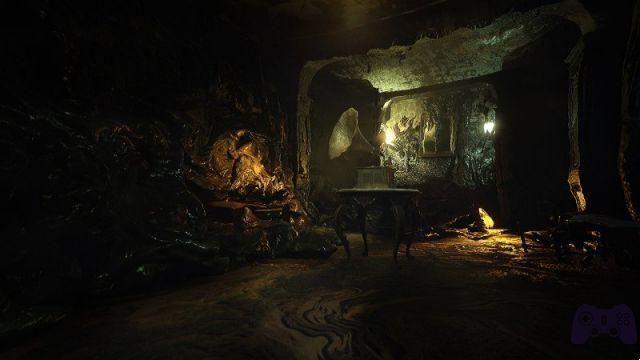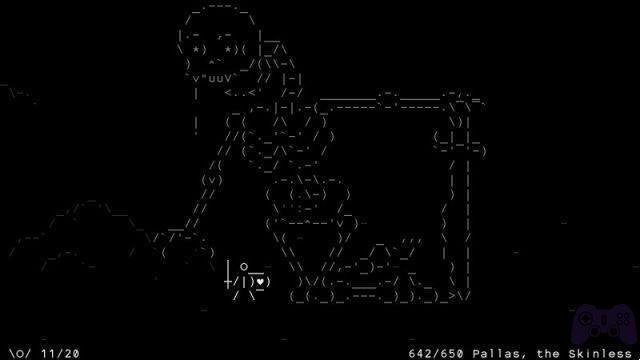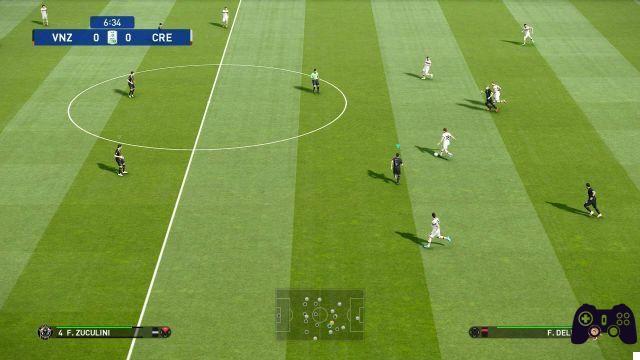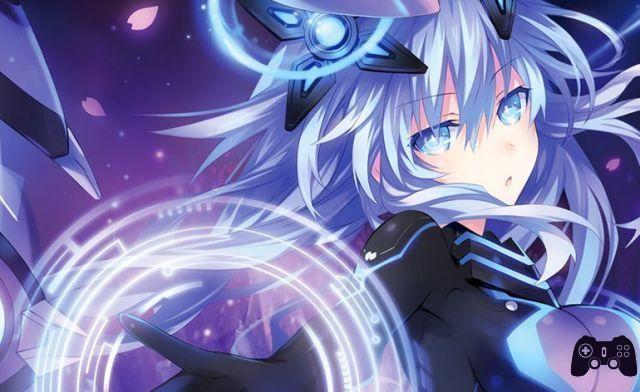
It's been six years (five on European soil) since JRPG enthusiasts got acquainted with Neptune and the other beautiful CPUs of GamIndustri. With six main chapters behind them (the original trilogy on PlayStation 3, and the reboot on PlayStation Vita) and three spin-offs, on February 12th, the Goddesses debuted on PlayStation 4 with the seventh canonical chapter of the series: Megadimension Neptunia VII. Always courtesy of the collaboration between Idea Factory and Compile Hearts, the time has finally come to give an opinion on the latest (for now) adventure of Neptune and associates.
This review comes late mainly for a technical reason:
After the first Arc set in the Zero Dimension (more details in the course of review) we were faced with the choice between the four CPU protagonists and starting with Noire, we ran into what is in effect a programming bug. In the Neptunia series there has always been a necessary grinding, in order to get prepared for the boss on duty, in the aforementioned dungeon, it was necessary not to face any monsters and run directly to the final battle. Too bad that it is not written anywhere, and that therefore I found myself saving with 9 HP without the possibility of healing myself (in this chapter it is necessary to return to the main city to restore HP / MP) and with a boss, who however weak , with a preemptive strike he sent me into a continuous loop of Game Over. I therefore had to abandon my save-file for over twenty hours and start the title all over again, which is why in order not to publish the review at the end of March, I was unable to reach the third dimension (Heart Dimension) in the Neplunker stages.
This crazy mad multiverse
Megadimension Neptunia VII is the direct sequel to Victory / Re; Birth 3 and is the cornerstone of the explanation of the multi-verse conceived by Compile Heart, mentioned precisely in the last phases of the previous episode. The player becomes aware of the presence of different dimensions, each with their own rules and their own versions of the heroines, also drawing the boundary line between the PlayStation 3 trilogy and the PlayStation Vita one and above all giving a world apart and a sense also to the spin off.
In 'Hyperdimension (the main universe, that of the three Kings; birth) Neptune and Nepgear find a console almost destroyed and abandoned, and in a similar way to the portal that transported them to the Ultradimension (also in Re; birth3) they end up in a devastated Planeptune and apparently uninhabited. Here they will make the acquaintance with Uzume, the only CPU left, busy fighting against a huge purple giant, thus starting the events of the Zero Dimension.
Megadimension Neptunia VII is divided into three large arc (Zero, Hyperdimension and Heart), divided in turn into episodes (as has become tradition) of more or less length but now united by the two characteristic features of the series: the almost infinite dialogues and the grinding needed to continue. Contrary to what it may seem, the three arc are not three separate games, but large sections of the same title that follow each other and are not conceivable in stand-alone. In the same way as the seasons of a television series, in fact, to get to the bottom of all the mysteries and secrets of the dimensions, it will be necessary to continue in the title, one arc after another, without interruptions (if not those due to grinding). Megadimension Neptunia VII is the chapter that dares the most under the plot front, going to tpccare a thorny and almost always messy issue like the multiverse (and readers of Marvel and DC comics can only agree). Going into detail, there is obviously no lack of the classic irony of the series, the breakages of the fourth wall by Neptune and above all the fan service, including costumes, generous shots and dedicated events.
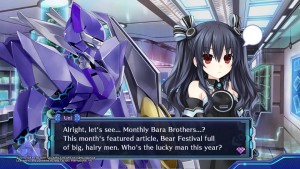
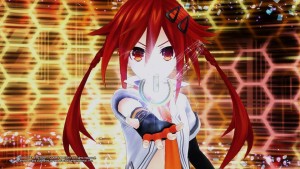
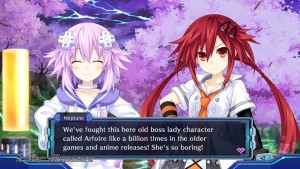
Between giants and healing objects
Megadimension Neptunia VII is still a turn-based role-playing game like the other chapters of the series, but Compile Heart has decided to improve some aspects of the gameplay and to sacrifice others, however, not going to upset the skeleton of the Neptune saga.
During the clashes, the heroines are now able to move freely in the arena, as long as they do not consume the appropriate bar, and the combos are once again assigned to the choice of the player, the number of these however, is sanctioned by the equipped weapon , and no longer by the sum of the technical points as in the past: each weapon will have a different number of slots and it will be necessary to set the combos to be performed later in battle. Even the EXE bar (dedicated to group special moves and transformations) has undergone a drastic change, it will no longer be possible to accumulate it in pre-boss fights but will have to be reloaded every time from scratch. The major change of Megadimension Neptunia, however, lies in the recharge of life points and special points no longer linked to level advancement, but forced to the objects and to the exit of the dungeon with return to the main city. This change is apparently negligible, but continuing in the game (especially starting from the second Arc Hyperdimension Neptunia G: The Golden Leaders) weighs down the grinding and makes the game slightly more difficult, because you will have to look after the remaining healing tools and try not to overdo it. before a boss or a rare mob, penalty the game over and the return to the home screen.
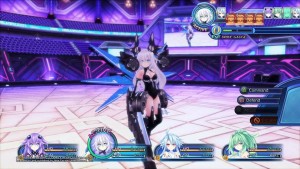
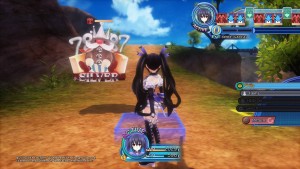
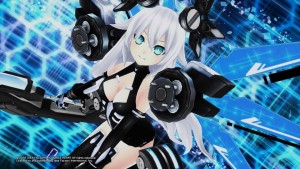
Obviously there is no lack of purer novelties to the gameplay mechanics of the series, including a new form for the four CPUs that can be activated once transformed, called Next Form and that goes to further enhance them but will be consumed at the first special attack launched (by unloading the EXE bar). The monster defense bar has been eliminated, on the other hand some of these will have destructible parts that will lead to Parts Break, a phase in which not only the CPUs will inflict more damage, but which will reward the player with rarer drops. Also introduced giant battles, in which our CPUs will have to surround the enemy and face him only with special moves, in these phases the SP indicator will recharge itself as in the old episodes, allowing the Goddesses to give their best against these formidable enemies .
Other small changes concern the Lily Rank, that is the friendship between party members, whose value will grow faster than in the past, allowing soon to take advantage of the support skills and the Share of Gamindustri, which for the first time is also influenced by the HDD transformation of the heroines, as always told in the previous chapters.
Hyperdimension Crossing: Let's Go to the City!
Another fundamental aspect of Megadimension Neptunia VII is the management of the main cities, the only places of salvation from the fury of the monsters in this chapter for PS4. In addition to the shops, the classic Chirper square where events will take place, the guild where to accept missions and the center for the development of equipment CDs, a new option has been added to the menu concerning the development of the city.
When our heroines leave the Zero Dimension, in fact, they will divide each one on their own continent to face the "rivals" Gold Third, personifications of third-party development houses (similar to the personifications of the series seen in HyperDevotion Noire, here we will have Capcom, Bandai Namco, Square Enix and Konami) and will use the nation's capital as a base. The player will be able to invest in three different criteria to improve the city: Commerce (a rare item will be added to the shop at each level), Industry (which will add development plans for rare items) and Public Relations (useful for unlocking extras and above all necessary for the True Ending of VII).
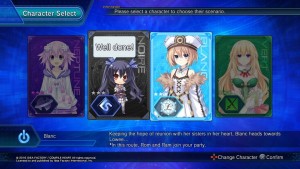
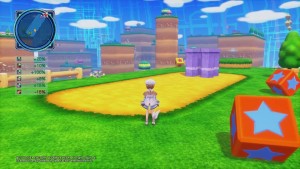

To raise the money needed to finance the city, the player will be able to count on a brand new scout system, which replaces both Stella's Dungeon and the dungeon renewal plans seen in the Re; Birth trilogy in one fell swoop. Each Scout (who are none other than the inhabitants of Gamindustri) has a quality that will affect the dungeon in which he is sent (more experience, less money, exchange enemies, and so on) and every ten minutes the search results can be collected. The only drawback to this new system, which in some ways helps the relentless grinding of the title, is the inability to unload the scouts inside the dungeon, forcing the player to have to return to the city every ten minutes, or lose any subsequent prizes.
Apocalypse Nao
The transition to PlayStation 4 has especially benefited the polygonal models of the CPUs, which finally enjoy high definition, within the numerous dungeons proposed by Compile Heart, among these unfortunately, there is no lack of environments recycled from previous chapters, but fortunately there are enough new labyrinths to turn a blind eye to variety. Where, on the other hand, the weight of recycling is felt, it is certainly in the dialogue phases, with the sprites now only cleaned up but which always offer the same body movements (adding only a few facial expressions). add some more animation.
Fortunately, if from the visual side there is a strong recycling, the sound is at excellent levels, with an avalanche of new songs that join the historical ones of the series (the menus, and the main themes of the various CPUs) all guided as always from the new opening sung by the tireless Nao: Vision of Telativity. The game is completely in English and given the high amount of dialogues it is recommended only for those who chew the Anglo-Saxon language well, there is also a free dlc that I add the original dubbing, clearly superior to the Western one in giving characterization to the protagonists.
✓ Texture with mordant
✓ Scouts break the monotony x New prohibitive treatment system
x Grinding even more present
x Recycled sprites




